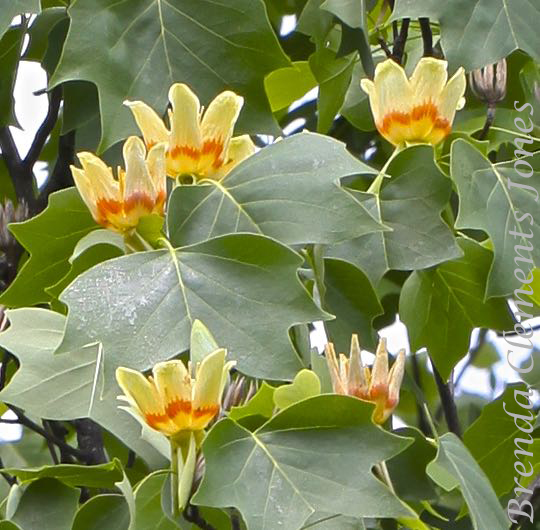
The first tree I remember getting to know. Growing right next to our patio. As a little one I’d listen for its “heartbeat” and give it “injections” though now I’m sure it was totally healthy. Back then I had the title of “Tree Doctor” and would take care of it. A Tulip Poplar (Liriodendron tulipifera).

Here, my Mom on our patio and that tree, my “patient”, in this image slightly left and behind her.

One of many common names, Tulip Poplar, is confusing since the tree is not closely related to true poplar trees or to tulips.

Another name from long ago comes from Native Americans using the wood for dugout canoes. It was called Canoewood by early settlers west of the Appalachian Mountains.

The bark of the Tulip Poplar as a young tree has a smooth appearance.

As the tree ages, the bark becomes beautiful with deeply interlaced furrows. The tree can grow as much as three feet per year but as it ages that growth rate slows. Under near optimum conditions a Tulip Poplar can live to be three hundred years old and reach a height of 200 feet.

The “tulip” in the common name Tulip Poplar comes from the look of the flowers of the tree. Since the trees are so tall, often the blooms aren’t even visible.

After the bloom comes the fruit which is a cone-shaped arrangement of winged seeds called samaras.

And of course if one were to be in a parade the leaves would make a perfect banner to carry.
